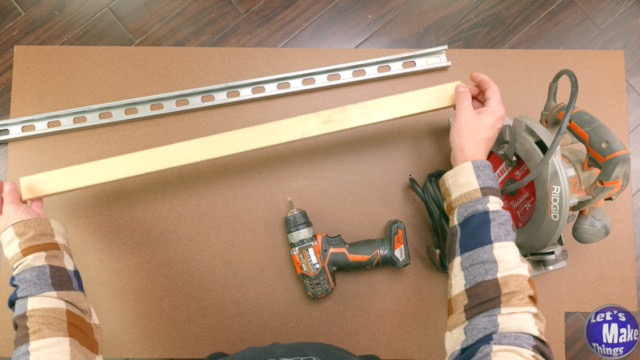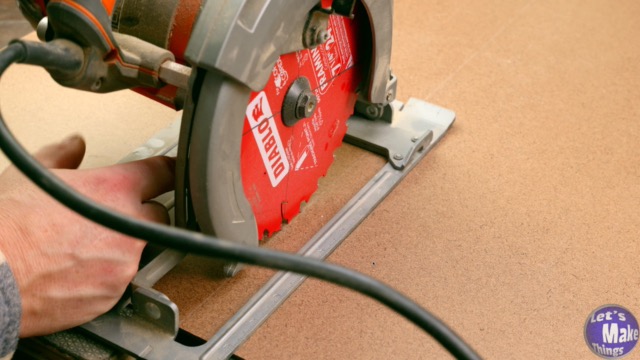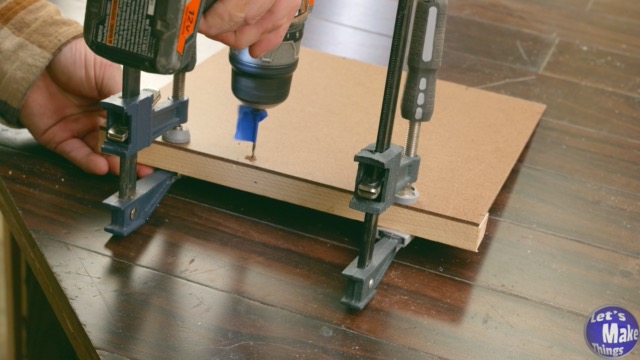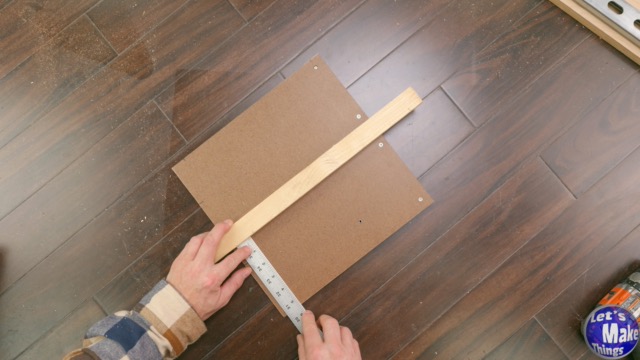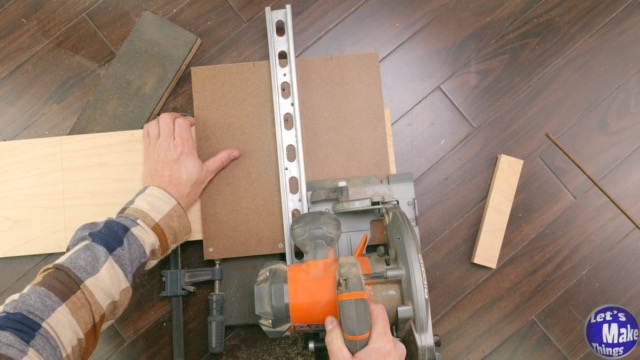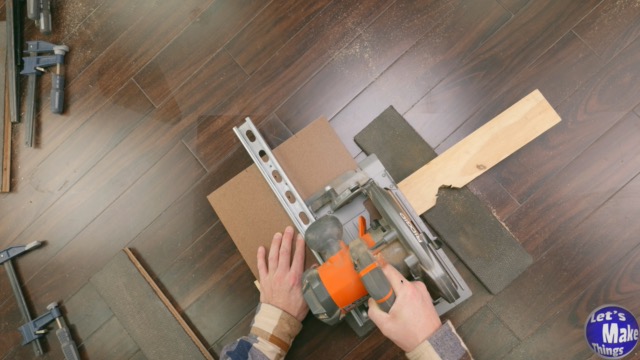Circular Saw Cut-Off Jig
December 30th, 2024
The table saw is often the centerpiece of a workshop, but if you’re just starting out, a circular saw is a simple, affordable alternative. Even the simplest projects need a quick way to cut stock accurately, and cutting boards down to manageable sizes is often the first step in any build—even if you have a table saw. Today we’re making a circular saw cut-off jig that delivers table saw precision.
ATTENTION: These plans are yours to use…they are offered as a gift from me to you. You have every right to use them to make this project for yourself, but please, do not sell or give these plans away as your own. I make absolutely no money off of these so I would appreciate those who view these plans to abide by basic copyright laws.
watch all steps in this video before starting
Please use the material and tool list below as a guide to finding the products locally.
Materials
- 1/8″ x 12″ x 12″ Hardboard (base)
- 3/4″ x 1 1/2″ x 12″ Soft/Hardwood (hook)
- 3/4″ x 1 1/2″ x 18 1/2″ Soft/Hardwood (fence)
- 18 1/2″ Thin Unistrut (very, very optional)
- (8) #6-3/4″ Flat head screws
Tools Needed/used
- Circular saw
- Hand drill
- Hacksaw (only if using unistrut)
- F-camps
- Ruler
- Grippy Board (optional, but oh so nice)
- Machinist or Carpenter square
- Chalk pencil (optional, but very nice)
As an amazon associate I earn from qualifying purchases.
Step by step instructions
1. Materials
The materials for this are incredibly simple. You’ll need a 1×2 that’s 31 inches long. The only caveat: it must be straight—absolutely crucial. Use the floor or an in-store level to check for straightness, or consider moving up to premium woods if needed. This part is key to the project!
3. Stock hook
Think of a bench hook that grabs onto the edge of your bench. This is essentially what the little hook will do for the stock you plan on cutting in the future.
Next, we need to cut a section off of the 1×2 to run along the bottom of the hardboard. Make sure the edge of the hardboard and the 1×2 are perfectly lined up before you clamp, drill, and add screws.
5. Using uni-strut (Not necessary)
I switched from using a 1×2 to unistrut for the fence. It’s not necessary, but I like that there’s no risk of warping on the ends. The smooth surface makes cutting along it feel more professional, but honestly, it’s not crucial to the project.
6. Squaring up the sides
To achieve zero clearance with the hardboard, both sides will need to be cut to size. This makes it easier to line up cuts with future pre-drawn lines and gives us the flexibility to use the jig on either the left or right side of the stock—no need to move the saw to the opposite side.
Tip Jar
If you found any errors on the page, please use my email below and contact me!

